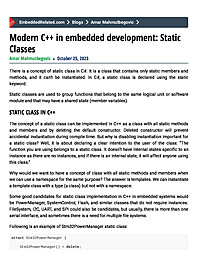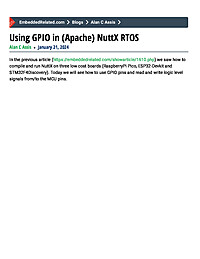
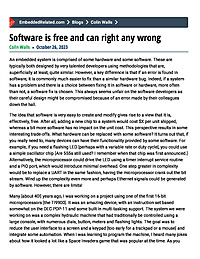
Software is free and can right any wrong
Software changes are so much easier than hardware modifications, so the temptation is always to take this approach to fixing bugs. This may not always be a good idea.
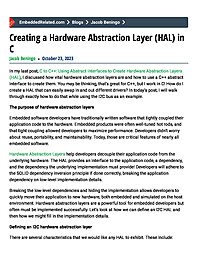
Creating a Hardware Abstraction Layer (HAL) in C
In my last post, C to C++: Using Abstract Interfaces to Create Hardware Abstraction Layers (HAL), I discussed how vital hardware abstraction layers are and how to use a C++ abstract interface to create them. You may be thinking, that’s great for C++, but I work in C! How do I create a HAL that can easily swap in and out different drivers? In today’s post, I will walk through exactly how to do that while using the I2C bus as an example.
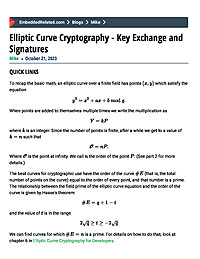
Elliptic Curve Cryptography - Key Exchange and Signatures
Elliptic curve mathematics over finite fields helps solve the problem of exchanging secret keys for encrypted messages as well as proving a specific person signed a particular document. This article goes over simple algorithms for key exchange and digital signature using elliptic curve mathematics. These methods are the essence of elliptic curve cryptography (ECC) used in applications such as SSH, TLS and HTTPS.

Elliptic Curve Cryptography - Security Considerations
The security of elliptic curve cryptography is determined by the elliptic curve discrete log problem. This article explains what that means. A comparison with real number logarithm and modular arithmetic gives context for why it is called a log problem.
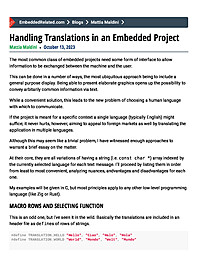
Handling Translations in an Embedded Project
A brief walkthrough on how to handle human language translations in a low level C application. Some options are listed, each with advantages and disadvantages laid out.

Elliptic Curve Cryptography - Basic Math
An introduction to the math of elliptic curves for cryptography. Covers the basic equations of points on an elliptic curve and the concept of point addition as well as multiplication.
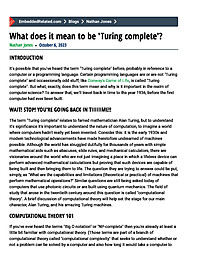
What does it mean to be 'Turing complete'?
The term "Turing complete" describes all computers and even some things we don't expect to be as powerful as a typical computer. In this article, I describe what it means and discuss the implications of Turing completeness on projects that need just a little more power, on alternative processor designs, and even security.

Mastering Modern FPGA Skills for Engineers
In the rapidly evolving tech industry, engineers must acquire proficiency in modern FPGA skills. These skills empower engineers to optimize designs, minimize resource usage, and efficiently address FPGA design challenges while ensuring functionality, security, and compliance.
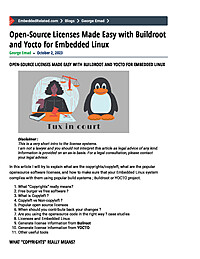
Open-Source Licenses Made Easy with Buildroot and Yocto for Embedded Linux
In this article I will try to explain what are the copyrights/copyleft, what are the popular opensource software licenses, and how to make sure that your Embedded Linux system complies with them using popular build systems ; Buildroot or YOCTO projec
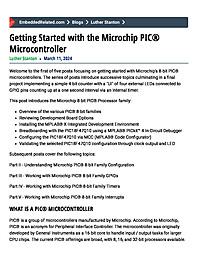
Getting Started with the Microchip PIC® Microcontroller
This first post of a five part series looks at the available hardware options for getting started with Microchip 8-bit PIC® Microcontroller, explores the MPLAB® X Integrated Development Environment and walks through setting up a project to expose the configured clock to an external pin and implement a single output GPIO to light an LED.
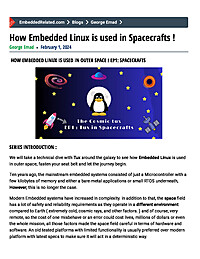
How Embedded Linux is used in Spacecrafts !
This article dives into the application of Linux in spacecraft, examining the challenges it poses and proposing potential solutions. Real-life examples will be discussed, while also addressing the drawbacks of employing Linux in safety-critical missions.
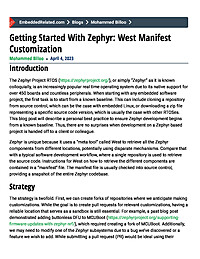
Getting Started With Zephyr: West Manifest Customization
Introduction The Zephyr Project RTOS (https://zephyrproject.org/), or simply “Zephyr” as it is known colloquially, is an increasingly popular real-time operating system due to its native support for over 450 boards and countless peripherals....
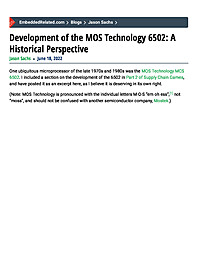
Development of the MOS Technology 6502: A Historical Perspective
One ubiquitous microprocessor of the late 1970s and 1980s was the MOS Technology MCS 6502. I included a section on the development of the 6502 in Part 2 of Supply Chain Games, and have posted it as an excerpt here, as I believe it is deserving...
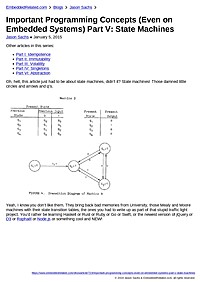
Important Programming Concepts (Even on Embedded Systems) Part V: State Machines
Other articles in this series: Part I: Idempotence Part II: Immutability Part III: Volatility Part IV: Singletons Part VI: Abstraction Oh, hell, this article just had to be about state machines, didn’t it? State machines! Those...
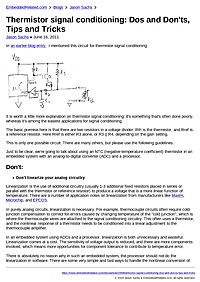
Thermistor signal conditioning: Dos and Don'ts, Tips and Tricks
In an earlier blog entry, I mentioned this circuit for thermistor signal conditioning: It is worth a little more explanation on thermistor signal conditioning; it's something that's often done poorly, whereas it's among the easiest...
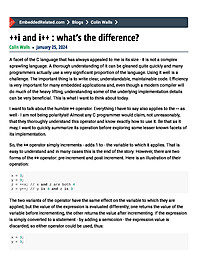
++i and i++ : what’s the difference?
Although the ++ and -- operators are well known, there are facets of their operation and implementation that are less familiar to many developers.
Getting Started With Zephyr: Devicetrees
This blog post provides an introduction to the "Devicetree", another unique concept in The Zephyr Project. We learn about the basic syntax of a device tree and how its structure and hierarchy mirror hardware, from the SoC to the final board. We also see how hardware described in a devicetree can be referenced and controlled in the source code of a Zephyr-based application.






